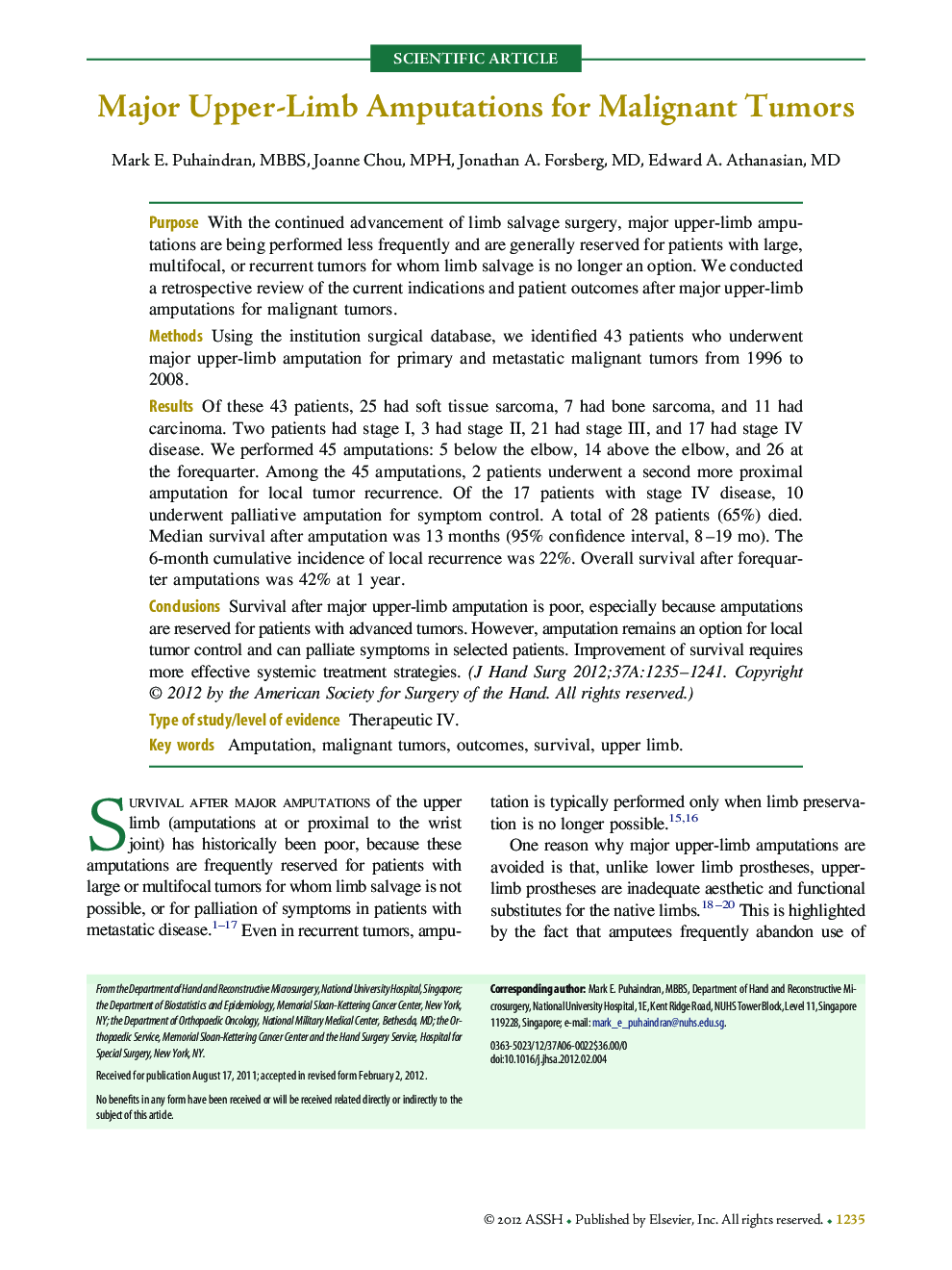| Article ID | Journal | Published Year | Pages | File Type |
|---|---|---|---|---|
| 4068601 | The Journal of Hand Surgery | 2012 | 7 Pages |
PurposeWith the continued advancement of limb salvage surgery, major upper-limb amputations are being performed less frequently and are generally reserved for patients with large, multifocal, or recurrent tumors for whom limb salvage is no longer an option. We conducted a retrospective review of the current indications and patient outcomes after major upper-limb amputations for malignant tumors.MethodsUsing the institution surgical database, we identified 43 patients who underwent major upper-limb amputation for primary and metastatic malignant tumors from 1996 to 2008.ResultsOf these 43 patients, 25 had soft tissue sarcoma, 7 had bone sarcoma, and 11 had carcinoma. Two patients had stage I, 3 had stage II, 21 had stage III, and 17 had stage IV disease. We performed 45 amputations: 5 below the elbow, 14 above the elbow, and 26 at the forequarter. Among the 45 amputations, 2 patients underwent a second more proximal amputation for local tumor recurrence. Of the 17 patients with stage IV disease, 10 underwent palliative amputation for symptom control. A total of 28 patients (65%) died. Median survival after amputation was 13 months (95% confidence interval, 8–19 mo). The 6-month cumulative incidence of local recurrence was 22%. Overall survival after forequarter amputations was 42% at 1 year.ConclusionsSurvival after major upper-limb amputation is poor, especially because amputations are reserved for patients with advanced tumors. However, amputation remains an option for local tumor control and can palliate symptoms in selected patients. Improvement of survival requires more effective systemic treatment strategies.Type of study/level of evidenceTherapeutic IV.
